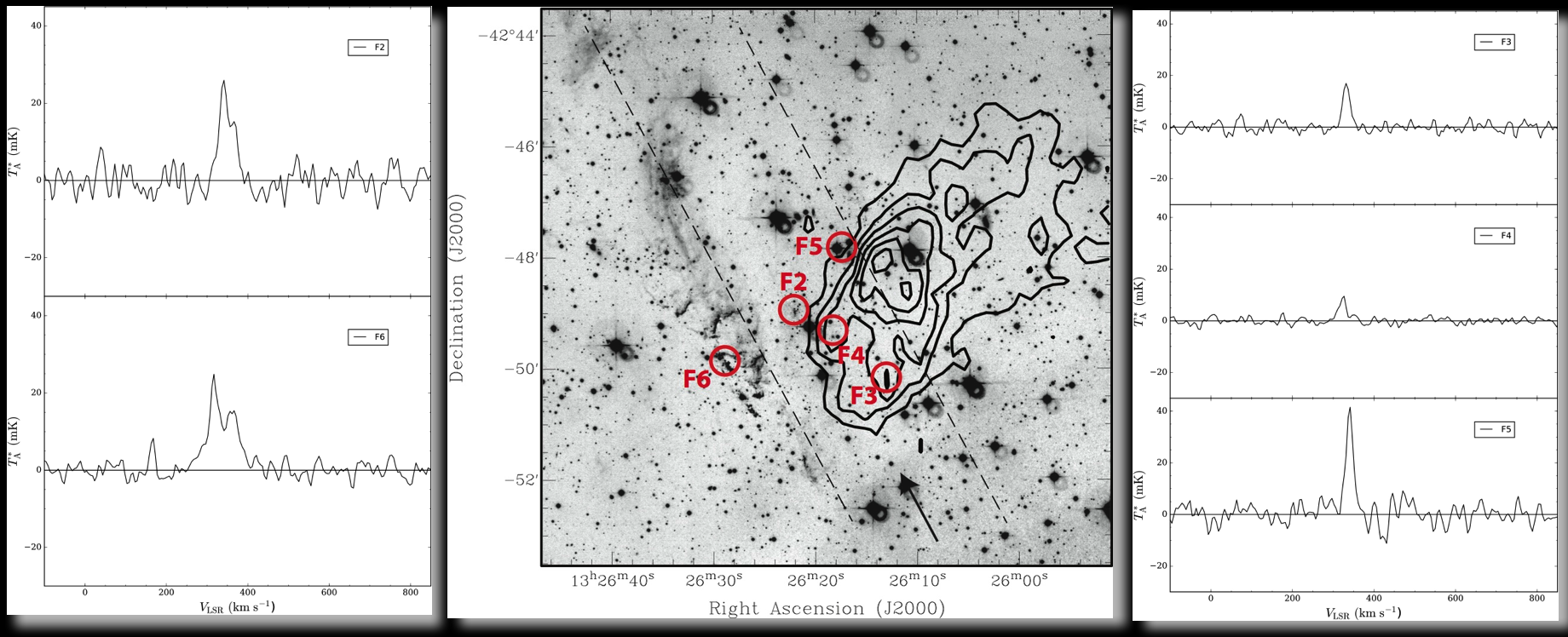| Description: | As part of the RadioLife project, we have made detailed observations of the so-called “Outer Filament" of the radio galaxy Centaurus A to study the effect of a radio jet blasting through a gas cloud. Earlier results obtained from MUSE observations (see Daily Image "A start is born!" http://www.astron.nl/dailyimage/main.php?date=20160517 ) had shown that this kind of interaction can result in new stars being born. In general, new stars form from clouds of molecular gas so if new stars are forming in the Outer Filament, there have to be such clouds. To check what these clouds look like, and what we can learn from them, we had a look with the Atacama Pathfinder EXperiment (APEX).
In a Letter now accepted by Astronomy & Astrophysics ("The missing link: tracing molecular gas in the outer filament of Centaurus A" http://arxiv.org/abs/1605.06598 by Morganti, Raffaella; Oosterloo, Tom; Oonk, J. B. Raymond; Santoro, Francesco; Tadhunter, Clive) we report the detection of molecular gas in the region of the Outer Filament. We detect CO(2-1) at all observed locations, which were selected to represent regions with very different physical conditions (see Figure). Normally, molecular gas is found close to clouds of cold, atomic hydrogen (the contours), but in the Outer Filament this is not quite the case. Surprisingly, the stronger detections of the molecular gas are instead in the region of the hot, ionised filaments. Even more unusual is that the star formation occurs where the gas has the most disturbed kinematics. In fact, we find variations in the widths of the CO(2-1) lines throughout the region, with broader lines in the region of the ionised gas, i.e. where the jet-cloud interaction is strongest, and narrow profiles in the HI cloud. This may indicate that the molecular gas in the region of the ionised gas has the energy and momentum of the jet-cloud interaction encoded in it, in a similar way as the ionised gas. These molecular clouds may therefore be the result of very efficient cooling of the down-stream gas photo/shock-ionised by the interaction.
|

